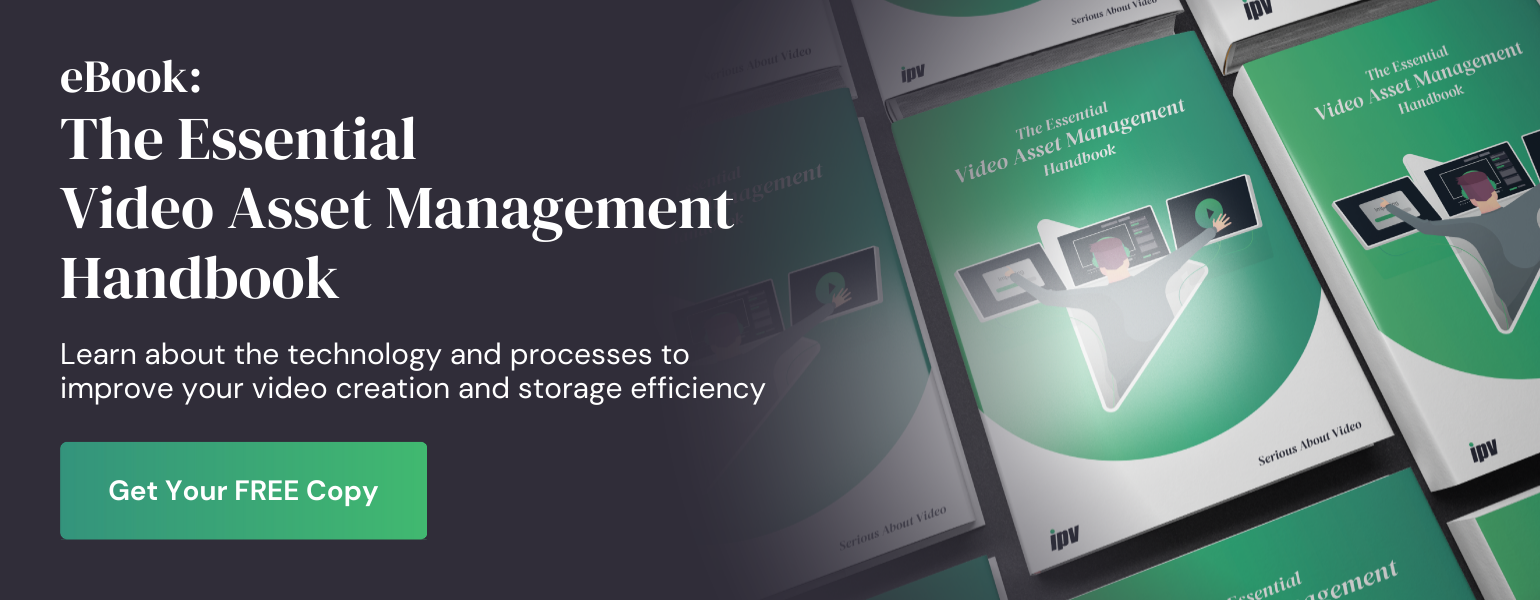%20(1).jpg)
The pressure to keep video files safe and secure is a perfectly understandable reason to lose sleep. In high-budget commercial productions (think Hollywood and TV), preventing a leak online can be the difference between a flop and a hit. But the need to keep things secret doesn’t stop there.
OTT platforms allow a far wider circle of creators to monetize video content -- extending the group of people interested in creating secure video production workflows. Equally, advertisers have always been deeply concerned about keeping their ideas under-wraps, and in-house corporate videos can be sensitive.
Digital technology is at the heart of the demand for increased video content. Not only do digital channels expand distribution options, the internet has conditioned us all to expect video content. For example, 75% of employees prefer video over text for training, and 72% of consumers prefer video marketing to text.
Digital technology is driving demand and helping deliver supply. Digital editing suites and non-linear editing techniques are essential to high-volume, modern workflows. However, operating online creates security risks that need to be confronted head on. This is especially true in the face of growing demands for flexible and remote work schedules, the need to integrate freelancers into workflows, the creative potential of collaborative cloud-editing, and the number of high-profile security breaches that have occurred in recent years.
Creating secure video production workflows that match the work-life demands of 2020 requires planning. If you want to operate online using manual security processes, you need to be diligent. The simpler solution is to invest in video asset management software that does the heavy lifting for you. The outcomes of both solutions are basically the same. Here, we are going to explain what makes a secure video production workflow in 2020, and provide tips on how you can get there today!
Make sure you’re using encryption
While it might have been possible for hackers to bypass encryption in the past, today it’s become extremely good at its job. Modern keys protect data to such an extent that it would take a current supercomputer thousands of years to crack. Almost always, breaking encryption is not an option for people trying to steal your video or do your organization harm. Typically, they have to find another way in.
Data from Venafi supports this idea. Their research found that more than 90 percent of breaches were the result of human error, not breaking encryption. What’s more, the majority of mistakes are inadvertent. Often, video editors and other people privy to sensitive information make blunders without even realizing it by doing things like clicking on a malicious link or even leaving a laptop on a train.
Encryption does the job, but it's only useful if there are no other chinks in your armor. If hackers can find another way in, they will. Because of this, you need to develop your video editing security protocols further than using mere encryption. You need more holistic solutions that make it easier for editors to ensure that their work doesn’t fall into the wrong hands.
Automate and create presets wherever possible
Preventing human mistakes is a challenge. People are not perfect. They don’t follow some algorithm that yields consistent results over time. Their behavior is messy, chaotic and inconsistent.
VAM (video asset management) developers, therefore, have tried to bring the benefits of machines — their consistency and obedience to rules — to the world of video editing. The idea is to provide users with as many options as possible to limit the risk of a breach and protect video assets.
How precisely do they do this? One popular strategy right now is the use of dynamic and granular permissions. A permission is just a tool that a network administrator uses to determine how much access a particular user should have for a specific file. What’s interesting about modern VAMs is how they’re deepening permissions tools to change what kind of access a user can have, and when. So, for instance, modern VAMs enable administrators to set hierarchies of users, allowing some to view particular files and denying permission to others. Furthermore, some tools allow admins to establish whether a specific user can edit a file, download it or merely view it.
Editing permissions for each user, however, would be a chore, especially if you have complex rules. VAM software, however, enables you to get around this annoying problem too using preset permission categories. Instead of creating a new profile each time you add a user, you can just assign new users to existing groups, saving time and effort.
Achieve transparency over access
Unfortunately, there’s always an incentive for people in your organization to leak data to the public, especially if the data is highly valuable. Because of this, you need to be able to track who does what on your system and when. Without a paper trail, however, it’s impossible to monitor colleagues and find out whether any particular person is responsible for a breach or not.
The great thing about VAM is that it lets you do this. It shows who is using your system, when they make edits, when they download files and much, much more. It provides complete transparency that administrators can use to determine if there has been any foul play or not.
Perhaps the most robust security features that VAMs offer is the ability to encode video with a unique watermark. A watermark is a permanent digital feature that appears on all of the video scenes that users edit. It remains on the image during screen capture, and adjusts according to the user account, providing an audit trail directly back to an individual user and allowing you to take follow up action.
Knowing who’s been accessing your sensitive video files (and when) is a vital ingredient in your defense against malicious actors of all stripes, both those inside your organization and out. Manually reviewing and recording access data is a significant undertaking and, in most cases, not practical. Automating the process with a VAM, however, makes it much easier, giving you far more control over your data and helping to curb leaks. It’s not a failsafe measure, but it’s much better than any other system yet devised for video editors, particularly those who employ remote workers.
Security online is possible with technology
If video editing studios are not currently in the cloud in 2020, then they’re dangerously behind the times. Keeping everything in the cloud has the benefit of centralizing data, enabling organizations to disseminate it to authorized people with an internet connection anywhere in the world. It also allows organizations to routinely and systematically back up their work, preventing costly losses if they’re reliant solely on hard drives on their premises.
Using encryption and manually securing your files and data remains an option, but it’s not optimal. When you try to do things manually, you introduce the risk of human error or malicious intent. Data breaches can and do happen, and people are working hard to bypass your security and gain access to your company’s private data.
VAMs are a second line of defense, backing up basic encryption. With VAM software, you can create bespoke permissions to control who has access to what data, and how much. And you can automatically generate usage histories, seeing who accessed what and when. Unique watermarks let you trace specific breaches back to individual users, discouraging deliberate dissemination of your private information.
While technology has enabled the current non-linear editing environment we currently enjoy, it also opened editors up to new risks. If you wanted to leak a video thirty years ago, you had to steal a tape and make copies physically. Today, though, a simple cut-and-paste job makes it trivial for members of your organization to illicitly share files.
The solution? Technology. VAM introduces automated solutions that combat human error and protect the integrity of your data. That means you can streamline your video production workflow while feeling secure that your media is protected.


Speak Your Mind